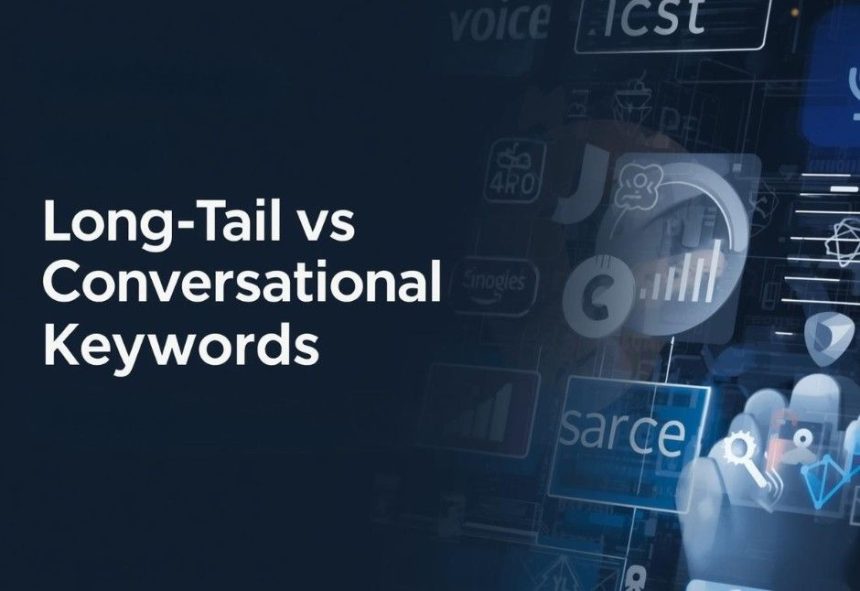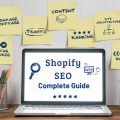Remember when SEO was about stuffing your content with two-word phrases and hoping Google would pay attention? Those days are gone. And honestly? Good riddance. The way people search has evolved a lot over the last few years.
We’re no longer typing “best pizza Perth” into Google—we’re asking Siri, “Where can I grab a decent margherita near me right now?” That’s an entirely different ball game, and if your site doesn’t keep pace, you’re essentially invisible to a large segment of potential clients.
We at SEO Perth Experts have seen this adaptation unfold in real time. It’s the businesses that learn or adjust to the language and type of conversation that are successful. The ones that don’t?
Well, they are still figuring out why their traffic has dwindled. Let’s talk about what’s actually happening here to see how you can get a clue.
The Voice Search Revolution (And Why It Matters More Than You Think)
Given that 93% of Australians use mobile phones to access the internet, according to the Australian Communications and Media Authority (ACMA), voice-activated searches have surged. Now people use their phones, smart speakers and, potentially, their cars to find out information. They stop typing; they start talking.
This matters because speech does not equal written language. When you type, you’re brief. When you speak, you use full sentences. You add context. You ask questions as you would ask another human being.
Think about it. Nobody says “weather Perth today” out loud. They’d say, “Hey Google, what’s the weather going to be like in Perth today?” See the difference? That’s conversational search, and it has made a real-world impact on what we’re supposed to consider when searching for keywords. Our Perth SEO services focus on voice search optimisation for just that reason.
What Are Long-Tail Keywords, Really?
Long-tail keywords have been around for ages. These are those longer phrases that tend to be more specific in nature and lower in terms of search volume but which will likely lead to a better conversion rate. Instead of going for “SEO services”, it could be “affordable SEO services for small businesses in Perth”.
Makes sense, right? The person who is searching for that second phrase knows precisely what they’re after. They’re further along in their decision-making process. They’re more likely to actually hire someone.
But that’s where it gets interesting. In the past the idea of long-tail keywords was of the specificity and lower competition variety. They’re now increasingly becoming naturally conversational without us even realising it. The distinction between “long-tail” and “conversational” is getting very, very fuzzy.
Conversational Keywords: The New Kid on the Block
These conversational terms are written to imitate human speech. They’re the words people use when they’re talking with their devices or typing in more relaxed, question-based language.
These often include:
- Question words (who, what, where, when, why, how)
- Longer, natural sentence structures
- Local intent (“near me”, specific suburbs)
- Implied urgency or immediacy (“right now”, “today”, “open now”)
The key difference? Conversational keywords prioritise how humans actually communicate, not how we think search engines want us to communicate. And guess what? Modern search engines have gotten smart enough to prefer it this way too.
Where AI Comes Into Play
Google’s not just worrying about keywords now. Their AI systems, especially BERT and MUM, are looking to understand what you’re actually asking for. And they’re also seeing context, natural language patterns, and what you’re really seeking.
This is huge. You no longer can game the system with exactly matching keywords. You have to create content that truly answers the questions people ask. In real words people can understand.
When someone asks their voice assistant, “How do I improve my website’s ranking on Google without spending a fortune?”, AI-powered search is clever enough to present results about cost-effective SEO strategies—even if those exact words aren’t on the page. That’s why AI and generative engine optimisation are revolutionising how we approach content creation.
The Overlap Nobody Talks About
Here’s the bottom line that most SEO guides won’t tell you: long-tail and conversational keywords are not opposing strategies. They’re cousins. Sometimes, they are basically the same thing.
A long-tail keyword such as “how to optimise my Perth business website for mobile users” is also perfectly conversational. Somebody could type that or say that to Alexa. It works both ways.
The true expertise lies in knowing when to emphasise one over the other and how to synthesise the two naturally within your content strategy. This is where working with a real pro-level SEO consultant makes all the difference.
Practical Strategies That Actually Work
Real questions. That is where you start.
Get into your Google Search Console data and find out what questions people are asking that land them on your site. Better yet, what questions are they asking that you’re not even in the rankings for? There’s your low-hanging fruit.
Write FAQ Sections
Most FAQ pages are written for search engines. Write yours like you’re actually answering a customer’s question in person. Because that’s exactly what you’re doing. If you’re running a WordPress site and want to get even more technical, check out our guide on optimising WordPress for voice search, which includes everything from schema markup to mobile performance.
Use Natural Language Throughout
Please don’t force keywords where they sound awkward. If “SEO services Perth” sounds clunky, rephrase it. “If you’re looking for SEO services in Perth” flows better and still hits your keyword. AI can recognise variations and contextual relevance now.
Think About Featured Snippets
When someone asks a voice assistant a question, it often reads out the featured snippet from Google’s search results. Structure some of your content to directly answer common questions in 40-60 words. Clear, concise, helpful.
Get Specific With Location Intent
For Perth businesses especially, this is gold. People aren’t just searching for “digital marketing agency” anymore—they’re asking, “Who’s the best digital marketing agency in Subiaco?” or “Which SEO company near Fremantle can help with Google Ads?”
If you’re only targeting broad terms, you’re missing these hyper-specific, high-intent searches.
Common Mistakes We See All the Time
Let’s get real about what does not work.
Keyword Stuffing (Still).
Yes, people are still doing this. No, it doesn’t work. In fact, it is likely to hurt you. If that content reads as if it was written by a robot, AI detection tools will flag it. Even worse, humans will bounce right off your page.
Ignoring Search Intent.
Just because a keyword has high volume doesn’t mean it’s a good fit for your business. Someone looking at “free SEO tools” likely isn’t ready to hire an SEO agency. Know who you are actually trying to reach.
Forgetting About Mobile
Most voice searches take place on mobile phones. If your website is not optimised for mobile, you are losing most of your potential visitors. Another important aspect related mostly to users in a hurry, looking for quick information by voice search, is page speed.
Writing Content For Google And Not For Humans
This is the big one. You cannot fake it by making your content look like it has genuinely helped the user while actually ticking all those SEO checkboxes in the background. Google’s AI is way too smart for that now, and besides, any real human will see through poorly disguised writing aimed at fulfilling some perceived algorithmic preferences.
How SEO Perth Experts Approaches This
This is frequently where we start when clients approach us to ask why their traffic has plateaued. We start by analysing their existing content through the lens of conversational search patterns. Is it truly responding to the questions its customers have? Is its content structured in a way that AI can easily parse and understand?
We take a deep dive into the specifics of the phrases your target audience is using, not just the obvious keywords but the natural questions they are asking at different stages of their buying journey – through our SEO consultation services. Long-tail organic searches: content enters the user. We break down all barriers between content and user, getting granular with long-tail organic searches to help you get discovered.
We analyse voice search queries. We analyse competitor content. We find the missing gaps where your business should be appearing but it is not, and then we build a content strategy that puts you in position to capture both traditional and conversational searches.
The technical side matters too. Schema markup, page speed optimisation, and mobile responsiveness – these aren’t optional anymore. They are fundamental to appearing in voice search results as well as AI-powered answer boxes.
What This Means for Your Content Calendar
You cannot just put a couple of simple question-based headings in the right positions and be done with your blog. This needs to be properly strategised.
Start building topic clusters. If you are a tradie, do not have just one page simply for “plumbing services”. Build comprehensive content around questions such as, “How much does it cost to fix a leaking tap in Perth?” “What causes burst pipes in winter?” and “When should I call an emergency plumber?”
They complement each other. They demonstrate your expertise. They answer actual questions. And this is exactly what voice search users want.
The Future’s Already Here
Artificial intelligence-powered search is not something of the future. It is very much present. ChatGPT and other AI tools – these are the instruments through which people change the way they find information by prioritising more conversational and helpful content rather than pages filled with keywords.
Those who get in now will be laughing all the way to the bank. The ones that wait? They’ll be scrambling to catch up in a year or two when their competitors have already captured the market share.
Getting Started (Without Getting Overwhelmed)
Look, we get it. This might sound like a lot, and honestly? It is. That’s why SEO companies come into play. You don’t have to revamp your website overnight. Start small:
- Identify three common questions your customers ask
- Write genuinely helpful content answering those questions
- Structure it naturally, like you’re explaining it to a mate
- Make sure your site loads fast on mobile
- Monitor what happens
Then build from there. Or better yet, partner with an agency that gets this stuff inside and out.
At SEO Perth Experts, we’ve assisted dozens of Perth businesses with that transition. Some were starting from scratch. Others just had existing content that needed refining. Every situation’s different, but the principles remain the same: be helpful, be natural, and make sure your content actually answers what people are asking.
Voice search and AI are not replacing traditional SEO—they are adding layers of complexity that need to be mastered and navigated strategically. The keywords that matter are the ones your customers are actually using, in the way they’re actually speaking.
That’s the future of search. And frankly? That future’s already here.
If you’re ready to ensure that your business shows up when potential customers are asking for what you offer—whether they’re typing or talking—we should chat. Our team at SEO Perth Experts specialises in AI-powered search optimisation and voice search strategies that actually drive results.
Because at the end of the day, it’s not about tricking algorithms. It’s about being there when your customers need you, in the language they’re already using.






